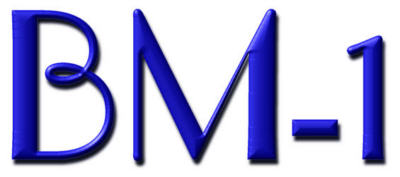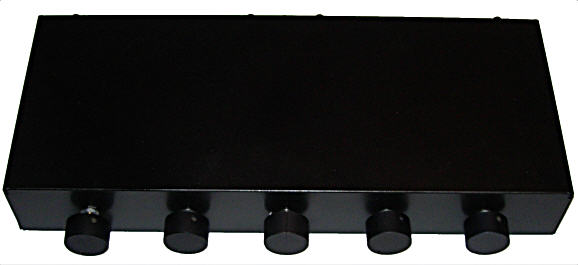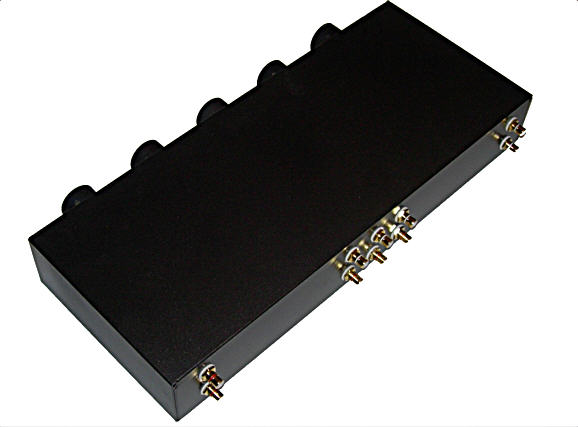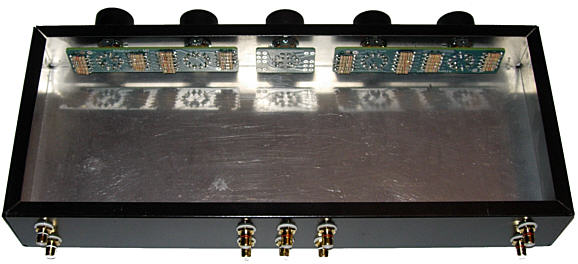| John Broskie's Guide to Tube Circuit Analysis & Design |
Post 207 10 July 2011
Mono 66-Position Balanced Stepped Attenuator
As you can see from the schematic above, the BM-1 stepped attenuator presents five connections: two for the balanced input signal and two for the balanced output and one for the ground connection. This is a very clever design, even if I do say so myself. Think about it: being able to set 66 -1dB volume decrements for a balanced signal source is a huge undertaking; and being able to do it with just 24 resistors and two single-deck rotary switches is a miracle. Imagine how large and crazy-expensive a two-deck, 66-position rotary switch and 132 resistors would cost, if a conventional series attenuator were used instead. (And a ladder stepped attenuator would cost twice as much as the series attenuator.) The small price we pay is a -3dB insertion loss, because of the shunt attenuator. Since most balanced signal sources already provide far to much voltage output, hence the need for a volume control, the -3dB loss is not a problem.
The extra-thick, 2oz copper PCB is 1.4 by 5.8 inches big and the rotary switch spacing is 3 inches. The PCB are made in the USA. BM-1 mono stepped attenuators include 8-page user guide with assembly instructions and a resistor-value tables. The BM-1 balanced, mono attenuator is available now at the GlassWare Yahoo store and cost the same as the M1 mono unbalanced attenuator; dirty cheap for stellar performance, in other words. http://glass-ware.stores.yahoo.net/
My Passive Line Selector and Stepped Attenuator Box
I have yet to wire up the unit, but that task shouldn't take too long. (If I don't use Teflon-coated wire, it would only take half as long to assemble.) I am using carbon-film resistors throughout, as I want to avoid that harder sound that passive setups so often impart. The load impedance that the signal source sees is 20k, which is an excellent compromise, as it is not so low a resistance as to load down tube-based signal sources and not too high a resistance to drag down the high-frequency response due to cable and Miller-effect capacitance.
My eight year old son is keen to solder this project together. Since there are no finger-frying high voltages to worry about, I probably will let him. (I still need to add a ground post and a toggle switch for selecting grounding options: no ground, just floating the chassis; house ground, via a wire to the third prong socket on the wall socket; and signal ground, via to 10-ohm resistors to each channel ground.) The interesting thing is that I do not actually need another passive switch/attenuator box, as I already own several. But I find this project so coherent and elegant that I cannot resist building it. Before anyone is tempted to ask, yes a balanced version could easily be made by using two BM-1 mono attenuators and the same Select-1 signal selector switch. (In fact, I will probably build one, but with no selector switch; instead, I will use my phase switch and PCB.)
Next Time //JRB |
I know that some readers wish to avoid Patreon, so here is a PayPal button instead. Thanks.
John Broskie
And
High-quality, double-sided, extra thick, 2-oz traces, plated-through holes, dual sets of resistor pads and pads for two coupling capacitors. Stereo and mono, octal and 9-pin printed circuit boards available.
Designed by John Broskie & Made in USA Aikido PCBs for as little as $24 http://glass-ware.stores.yahoo.net/
The Tube CAD Journal's first companion program, TCJ Filter Design lets you design a filter or crossover (passive, OpAmp or tube) without having to check out thick textbooks from the library and without having to breakout the scientific calculator. This program's goal is to provide a quick and easy display not only of the frequency response, but also of the resistor and capacitor values for a passive and active filters and crossovers. TCJ Filter Design is easy to use, but not lightweight, holding over 60 different filter topologies and up to four filter alignments: While the program’s main concern is active filters, solid-state and tube, it also does passive filters. In fact, it can be used to calculate passive crossovers for use with speakers by entering 8 ohms as the terminating resistance. Click on the image below to see the full screen capture. Tube crossovers are a major part of this program; both buffered and un-buffered tube based filters along with mono-polar and bipolar power supply topologies are covered. Available on a CD-ROM and a downloadable version (4 Megabytes). Download or CD ROM
|
|||
| www.tubecad.com Copyright © 1999-2011 GlassWare All Rights Reserved |












